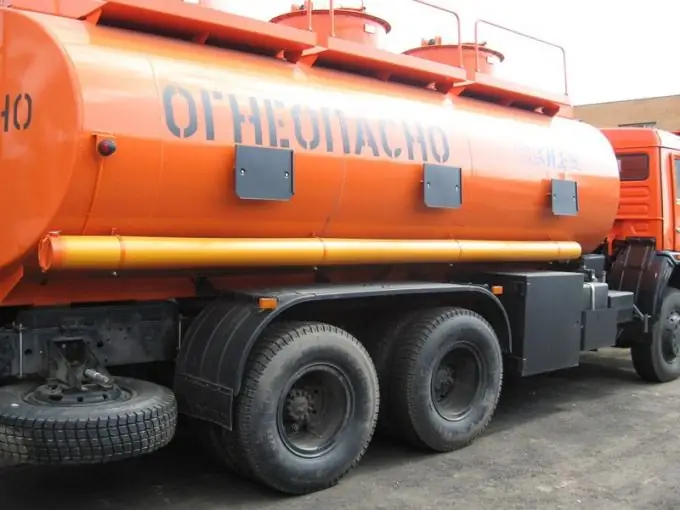Dangerous goods can be considered that can harm human health or nature, lead to the destruction of objects and material values, since they have a number of physical and chemical properties that lead to the above situations. For their transportation, it is necessary to obtain a number of documents and strictly follow certain rules.

The main document regulating the norms for the carriage of dangerous goods in road transport is POGAT. It was adopted and amended in August and December 1995, respectively.
In addition to it, there is the European ADR Agreement, which stipulates the international carriage of dangerous goods. It was developed in 1957 in Geneva and signed by a number of European countries, including Russia.
What is dangerous cargo
There are 9 classes of dangerous goods: explosive materials, compressed, liquefied or dissolved gases under pressure, oxidizing substances and organic peroxides, radioactive substances, caustic or corrosive substances, flammable substances, spontaneously combustible substances or substances that emit flammable gases when interacting with water.
In addition, each of them includes smaller subclasses, groups or categories. Therefore, the documents indicate the substance, its class and subclass. According to ADR, each dangerous goods is assigned a four-digit number from the list of numbers drawn up by the UN.
transportation rules
For the transport of dangerous goods, an ADR permit is required. Usually it is issued by the territorial authority of RosTransNazdor. This happens if the route passes through more than one constituent entity of the Russian Federation or along a federal road.
To obtain this permission, you must fill out an application in the prescribed form. A number of documents are also attached to it: a certificate of admission of a vehicle to the carriage of dangerous goods, an emergency or information card of hazard information systems, a certificate of admission of a driver to the carriage of dangerous goods and a transportation route.
The route should be away from densely populated areas and government-protected sites that are of value to society, such as historical monuments or nature reserves. If it is impossible to do this, then a route is chosen on which the possible danger is minimized. The time of movement, stops and speed should also be indicated here.
To obtain permission to transport dangerous goods, vehicles must be equipped with special devices. This includes a yellow beacon, wheel chock, heavy-duty fuel tank, fire suppression system, and hazard communication aids. This allows you to secure, prevent the risk of emergencies and reduce damage in the event that an emergency does occur.







